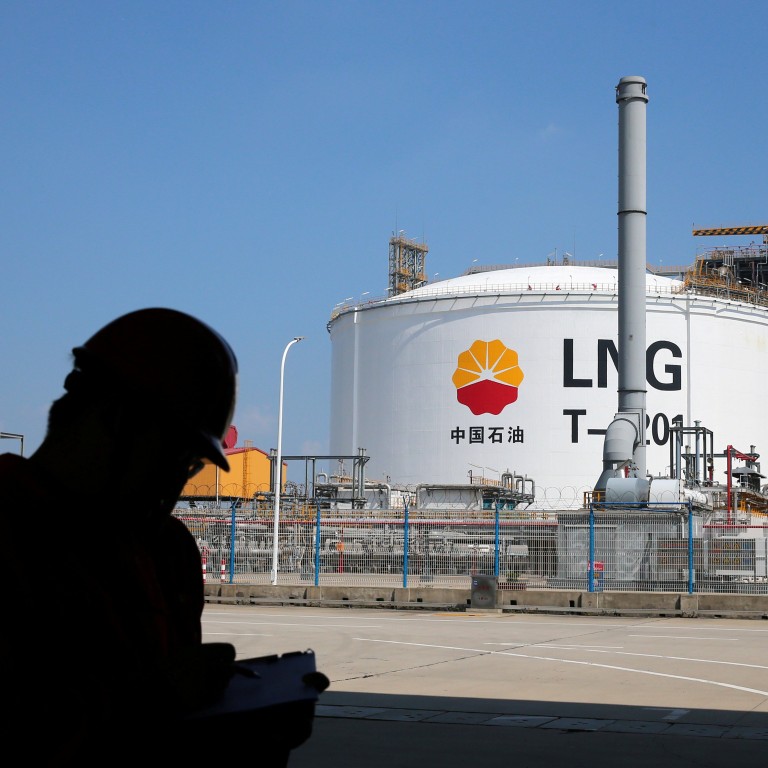
PetroChina reveals 58 per cent decline in profit, to shift focus to natural gas with oil demand set to fall amid country’s decarbonisation drive
- Company says net profit for last year amounted to 19 billion yuan (US$2.9 billion), down 58.4 per cent from 2019
- ‘We see the demand for cleaner burning natural gas continuing to rise,’ says president
PetroChina, the country’s largest oil and gas producer, expects crude oil demand to peak and then fall within the next 10 years, as China pursues a goal for carbon dioxide to peak by 2030.
The company has cut its oil output growth target to 0.4 per cent for this year, after growth of 1.4 per cent last year, it said on Thursday as it announced its annual results. It revealed that its net profit for 2020 amounted to 19 billion yuan (US$2.9 billion), down 58.4 per cent from 2019. The result was also slightly below a consensus estimate of 19.5 billion yuan made by 21 analysts polled by Bloomberg.
“Crude oil demand is already at a plateauing stage and will gradually fall. But we see the demand for cleaner burning natural gas continuing to rise,” said Duan Liangwei, the company’s president. He said he expected gas demand to grow 8.7 per cent this year, while the average growth for the five years to 2025 might reach 5.7 per cent.
The stage for China’s oil demand to enter long-term decline has been set by President Xi Jinping, who in September last year set the goal for carbon dioxide emissions to peak before 2030 and for China to achieve net zero emissions by 2060.
But, despite its bullishness about the gas market, PetroChina aims to only raise its gas output by 3.2 per cent this year, down from 9.9 per cent last year, something the management did not explain on Thursday.
The company’s operating profit from oil and gas production plunged 76 per cent to 23.1 billion yuan last year. This is because a 34.5 per cent fall in the average oil selling price could not be offset by a 4.1 per cent rise in oil and gas output, as well as a 8.3 per cent fall in cash costs, which excludes fixed costs, to lift each barrel of oil. Its refining and chemical operations fell into a loss of 1.8 billion yuan from a profit of 16 billion yuan a year earlier.
China looks to market prices to help turn Xi Jinping’s 2060 carbon neutrality goal from a pledge into reality. Here’s how
A total capital expenditure of 239 billion yuan has been budgeted for this year, down from the 297 billion yuan spent in 2020, with most of the cutbacks in exploration and production.
Meanwhile, Qi Meisheng, the CEO of China Oilfield Services (Cosl), CNOOC’s sister firm and key supplier, said on Thursday that it had bought a dozen logistics vessels powered by natural gas and would help sister firms install offshore wind farms, as part of its contribution to the group’s carbon-reduction effort. Cosl posted an 8 per cent rise in net profit to 2.7 billion yuan on Wednesday.


